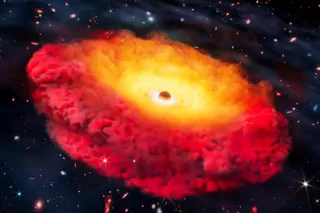In recent years, scientists have puzzled over a particular class of transients – bursts of intense X-rays and light shot from distant galactic centers.
Now, astronomers have discovered a new X-ray transient and are offering an explanation for these outbursts. The new find – located at the center of a galaxy some 500 million light-years away – is early fruit for a new transient detection system that feeds off data produced by the Swift Observatory X-ray telescope.
Astronomers call them transients - bright flashes of energy in the sky that often mark the destruction of something very large, such as a planet.
These repeat on widely different time scales, from every few hours to once a year or so, but they are believed to be related. Astronomers have come up with some vivid names for them, including “Quasi-Periodic Eruptions” and “Periodic Nuclear Transients.”
They can last anywhere from seconds to ...














